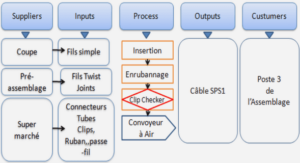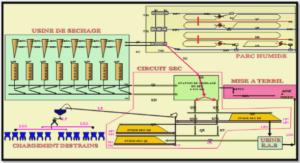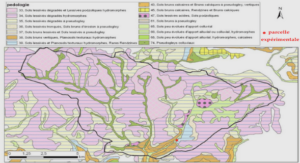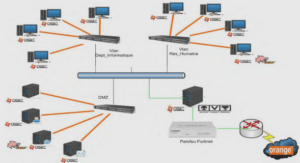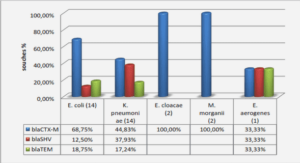One of the most challenging scientific endeavors is the discovery and investigation of the building blocks of nature. The Standard Model (SM) of particle physics summarizes today’s grasp for the elementary particles and the interactions between them. However, the mechanism that breaks electroweak symmetry in the SM has not been verified experimentally. This mechanism, which gives mass to massive elementary particles, implies the existence of a scalar particle, the SM Higgs boson. The search for the Higgs boson, the only elementary particle in the SM that has not yet been observed, is one of the highlights of the Large Hadron Collider (LHC) physics program .
This summer both the ATLAS and CMS Collaborations reported a 5σ excesses of events in their 2011 and 2012 datasets of proton-proton collisions at centre-of-mass energy √s = 7 TeV and √s = 8 TeV at the LHC. The decays to pairs of vector bosons whose net electric charge is zero identify the new particle as a neutral boson. The observation in the diphoton channel disfavors the spin-1 hypothesis. Although these results are compatible with the hypothesis that the new particle is the Standard Model Higgs boson, more data are needed to assess its nature in detail.
The Standard Model Theory
At microscopic level all the observed phenomenology in molecular, atomic, nuclear and subnuclear physics, can be understood in terms of three fundamental interactions: strong, electromagnetic and weak interactions. In the SM the fundamental constituent of the matter and the particle responsible of their interaction are represented by fields. The SM is a quantum field theory, which is invariant under the local gauge transformations of these fields, based on the symmetry group SU(3)C ⊗ SU(2)L ⊗ U(1)Y . The SU(3)C is the ”color” group of the theory of strong interactions (QCD: Quantum Chromo-Dynamics [3, 4]) and the SU(2)L ⊗ U(1)Y is the symmetry group which describes the electroweak (EW) interactions [1, 5]. The SM gauge symmetry group has 8 + 3 + 1 = 12 generators. To each generator a vector boson (also said gauge boson) is associated with the same quantum numbers. If the gauge symmetry is unbroken, this boson is of vanishing mass. These vector (i.e. of spin 1) bosons act as mediators of the corresponding interactions.
In the SM there are 8 massless gluons associated to the SU(3)C color generators, while for SU(2)L ⊗ U(1)Y there are 4 gauge bosons W+, W−, Z0 and γ. Of these, only the photon is massless. The masses of W+, W−, Z0 (m(W) ∼ 80.4 GeV, m(Z) ∼ 91.2 GeV) are quite large compared to the masses of the elementary particles (except to the top quark). In fact in the electroweak sector the group symmetry is broken “spontaneously“. In the SM the EW spontaneous symmetry breaking is realized by the Higgs mechanism (describe in more details in section 1.1.4). Four scalar fields are introduced with a potential that produces an infinite number of degenerate vacuum states. The choice of one of these vacuum states breaks spontaneously the symmetry. As result one scalar neutral particle (the Higgs) must necessarily be present in the spectrum of the physical states with masses very close to the range so far explored.
It is expected that the mechanism which leads to the EW symmetry breaking will be explain at the LHC thus completing the experimental verification of the SM. The SM is a renormalizable field theory which means that the ultra-violet divergences that appear in loop diagrams can be eliminated by a suitable redefinition of the parameters already appearing in the bare Lagrangian: masses, couplings and field normalizations.
In quantum field theory forces are described as an exchange of particles between the particles of matter. This is a major difference compared to classical physics where forces were assumed to act instantaneously. The exchanged particles are integer spin particles (spin 1) called gauge bosons. The forces are described via gauge symmetry groups [9]. Of the four forces known in nature: gravitational, electromagnetic, weak and strong, only the last three are included in the SM.
The EW symmetry breaking
A major difficulty in unifying the weak and electromagnetic interactions was the fact that e.m. interactions have infinite range (mγ = 0), whilst the weak forces have a very short range, owing to mW,Z 6= 0. The observed W and Z with longitudinal polarization, are not present in an unbroken gauge theory (massless spin-1 particles, like the photon, are transversely polarized). The longitudinal degree of freedom for the W or the Z have to be explained in a different way. The solution of this problem is in the concept of spontaneous symmetry breaking realized by the Higgs mechanism [10–12].
The Problems of the SM
The SM is a quite powerful theory which has predicted many particles before their discovery such as the top quark or the W and Z bosons. However there is also a number of problems that have no solution. The SM can be viewed as a low-energy effective theory valid up to an energy scale Λ. Above this scale any new phenomena could emerge. At low energies with respect to this scale the existence of new physics is expressed via effective operators. The success of the SM is due to the fact that most of the corrections to its physical observables depend only logarithmically on the scale Λ. In fact, in the SM exists only one operator which acquires corrections quadratic in Λ. This is the squared mass operator of the Higgs boson. If the SM is valid up-to the Planck scale the correction to the Higgs mass are very big and it is hard to explain naturally why at the end the mass of the Higgs is of the order of the EW scale ≃ O(100 GeV ). This is the hierarchy problem, which suggests that the SM may be a low-energy effective theory of a new fundamental theory, whose validity may not reach much beyond the TeV scale. Even if the SM Higgs would be discovered the SM has conceptual problems:
• The Higgs mechanism is introduced in an ad hoc way in the SM. It explains how vector bosons and fermions acquire masses but not why.
– The Standard Model contains free parameters, which have no theoretical underpinning. They have been introduced by hand in the theory to fit observations.
– There is no explanation to the hierarchy of the fermions masses within the SM. For example the up and down quarks masses are separated by almost six order of magnitude from the mass of the top quark.
– The Hierarchy problem: the quadratic corrections to the Higgs mass leads to an unnaturally high mass of the Higgs boson as the cutoff scale of the SM is raised. It is possible to restore the proper Higgs mass, but this requires fine tuning of the SM parameters, which is not intellectually satisfactory.
• It is known [13] that neutrinos have mass, but the exact nature of the mass terms remains unknown.
• Indirect proof of Dark Matter have been detected through the astrophysical observation [14, 15] but there is no suitable particle content in the SM to account for this observation.
• Gravitation is not included in the SM. These arguments do not imply that the SM is necessarily incorrect, but it must be extended to answer any of the questions raised above.
|
Table des matières
Introduction
1 Standard Model of Particle Physics and beyond
1.1 The Standard Model Theory
1.1.1 The Particle in the SM
1.1.2 The Quantum Chromodynamics
1.1.3 The Electroweek Theory
1.1.4 The EW symmetry breaking
1.1.5 The Problems of the SM
1.2 Technicolor Theories
1.2.1 The Quantum Chromodynamics at high mass scale
1.2.2 Minimal Technicolor models
1.2.3 Extended TC
1.2.4 Low-Scale Technicolor Model
1.2.5 Minimal Walking Technicolor
2 The Large Hadron Collider and The ATLAS detector
2.1 The Large Hadron Collider – LHC
2.1.1 CERN accelerator complex
2.1.2 Luminosity
2.1.3 LHC operations
2.2 The ATLAS detector
2.2.1 Magnet system
2.2.2 The Inner detector
2.2.3 The Calorimetry system
2.2.4 The Muon Spectrometer
2.2.5 The Trigger system
3 The LAr Timing Alignment
3.1 The ATLAS Liquid Argon calorimeter
3.1.1 The electronic chain
3.1.2 The Optimal Filtering Method
3.2 Previous timing studies
3.3 Analysis Method
3.3.1 Calibration LArCells stream
3.3.2 Electronic Noise suppression
3.3.3 Timing Analysis
3.4 Results
3.4.1 Time offset per FEB
3.4.2 Channel by Channel adjustment
3.4.3 Timing Resolution
3.5 Conclusions
4 Electron Efficiency measurements
4.1 Electron Objects in ATLAS
4.1.1 Electron Reconstruction algorithm in ATLAS
4.1.2 Electron identification in ATLAS
4.2 Efficiency and “Tag-and-Probe” Method
4.2.1 Electron trigger efficiency
4.2.2 Electron reconstruction and identification efficiency
4.3 Conclusions
5 Search for Technihadrons in Dielectron channel
5.1 Dataset and Monte Carlo
5.1.1 Dataset
5.1.2 Monte Carlo simulation
5.2 Signal and Drell-Yan cross-section corrections
5.3 Event Selection
5.3.1 Electron selection criteria
5.3.2 Dielectron selection criteria
5.3.3 Electron efficiency and energy scale corrections
5.4 SM Background estimate
5.4.1 Data MC comparison
5.4.2 Dielectron mee spectrum
5.4.3 Dimuon selection
5.5 Systematic uncertainty
5.5.1 Theoretical systematic uncertainties
5.5.2 Normalization
5.5.3 Efficiency and data-driven background systematic uncertainty
5.6 Statistical Method
5.6.1 Weighting procedure and Signal Template
5.6.2 Discovery statistics
5.6.3 Limit setting
5.7 Results
5.7.1 LSTC Limit
5.7.2 MWT Limit
5.8 Conclusions
Conclusion
![]() Télécharger le rapport complet
Télécharger le rapport complet

